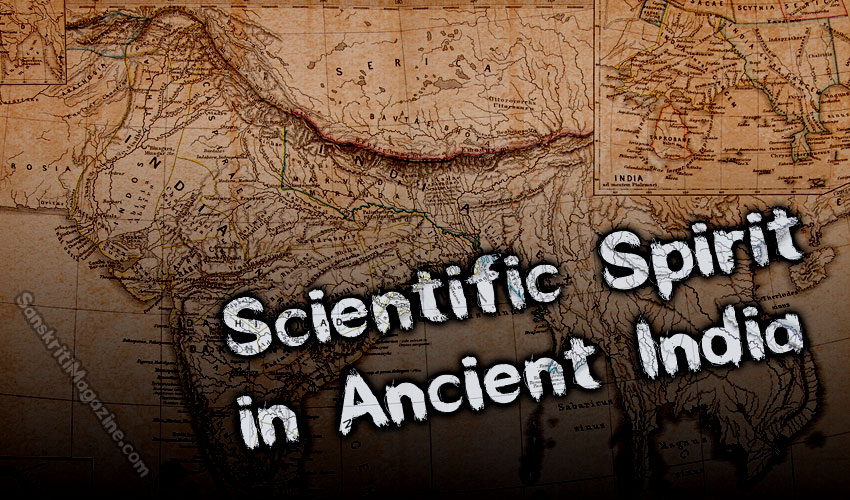The development of a rational attitude of mind and a spirit of inquire into the mysteries of the universe, which form the basis of all scientific study, is rightly claimed to be one of the greatest legacies of Greece to humanity. As in Greece, so in India, speculative philosophy was followed by a true scientific inquiry based on close observation of facts and phenomena.
The method of science, which has been described fully in Indian literature, involves, among others, perception, observation, experiment, inference and hypothesis. By application of this method great advances were made in astronomy and medical science including anatomy and surgery. These led to the growth of other sciences such as mathematics and chemistry. The actual achievements of the Hindus in these branches of science were very great and compare favourably with those of any other ancient people.
Even in other branches such as botany, zoology, mineralogy, metallurgy and physics, where actual attainments were not as great, we find the scientific process at work, that is, observation and classification of phenomena, experiment and inference. As regards botany, reference may be made in particular to the classification of plants, treatment of seeds for successful germination, study of diseases of trees and the method of improving flowers and plants – even to the extent of changing their essential properties.
Most striking is the detection in plants of the phenomena of life and death, sleep and waking consciousness, of pleasure and pain, sensitiveness to heat and cold, and movements towards what is favourable and away from what is unfavourable. In zoology we find various classifications of animals on the basis of their vija (ovum or seed), the number of senses possessed by them and according to their habitat, mode of life and dietary value.
In mineralogy and metallurgy we have reference to the working of underground mines, manufacture of various metals and a scientific process of treating metals. The iron pillar of Delhi is a living testimony to the forging of iron on a scale unknown to recent times and the process, now forgotten, of evolving a type of iron which does not rust in 1500 years. The true nature of gems and their classifications show some knowledge of geology.
The study of ancient Indian science is yet in its infancy, and if India suffers in this respect in comparison with Greece and other countries, it is perhaps due more to our ignorance than to her actual backwardness, either in scientific spirit or in actual achievements in various branches of science.
~ Dr. R.C. Mazumdar, from the 14th JC Bose Memorial Lecture, delivered at the Rose Institute on November 30th, 1952.











